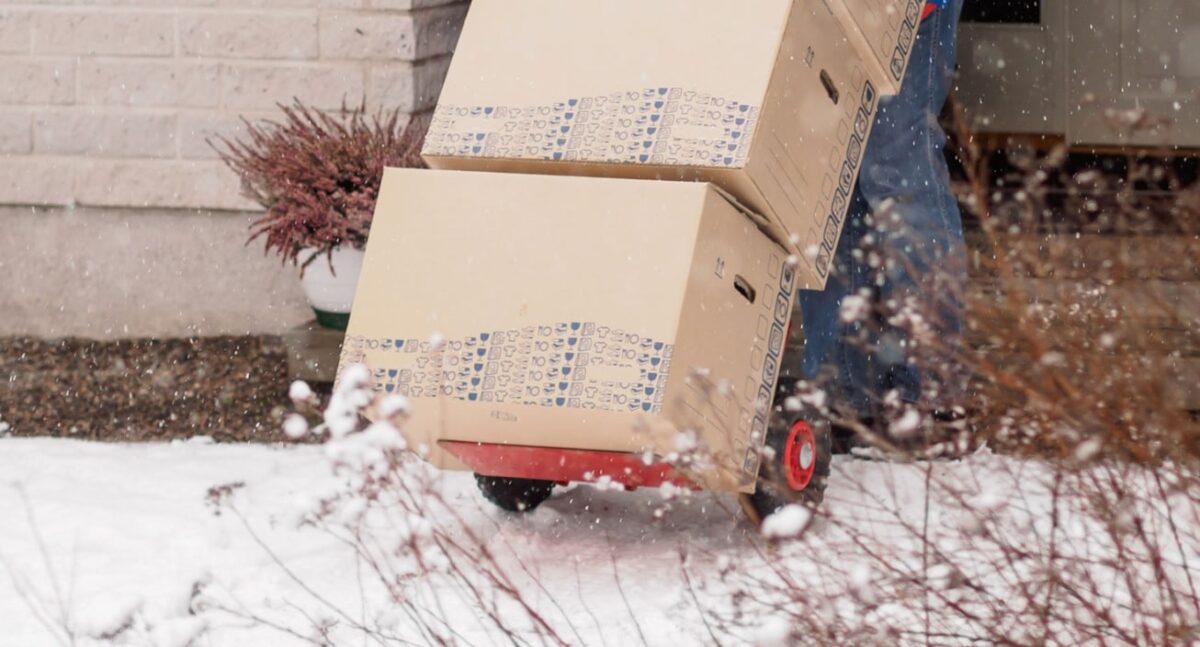One of the first questions you’ll get when you call professional movers is whether you are making a local or long-distance move. While it’s obvious there are differences between the moves, it might be hard to understand the intricacies from a customer standpoint. Knowing what kind of move you’re going to need will help you save time, effort, and money in the long run. So what are the differences?
Local vs. Long Distance Move
It might be obvious that a move down the street would be considered a local move, but what if you’re moving 5+ hours away in the same state? Generally, a local move is defined as moving either within the same city or within a 50-70 mile radius of your current home.
On the flip-side, a long distance move is one that is more than 70 miles away and generally requires crossing state lines. Long distance moves require careful planning to ensure that the delivery arrives at the right place at the right time. Long distance moves might be calculated in days versus hours depending on how far you’re going. More importantly, crossing state lines means the movers will need additional insurance and licenses to cover different locations and policies.
So what happens if you’re moving 50-70 miles away but it’s in a different state? Well that depends on the movers and your location. For example, many NYC moving companies consider bordering cities in New Jersey and Connecticut to be a local move. Don’t assume that’s the case with all movers, though. You should always give your new address and ask questions!
Price Calculation Local vs. Long Distance
Understanding quotes and estimates from local movers should be straightforward so long as you are working with a reputable company. When talking to the company, give as much information as possible. The more detailed you are, the more accurate the quote will be. The most obvious information is how big your house is, your current address, and your new address. However, don’t forget to note:
- If the movers will need to go up/down stairs at either of your houses
- What extra services you’ll need (packing, storage, unpacking, packing materials)
- Whether you’re moving any bulky items like pianos, pool tables, etc.
Based on the information you give them, they will calculate how many hours it will take them to move, how many movers you’ll need, and any extra services you add on. You can usually get away with having an extra box or two on moving day as that won’t increase the total amount of hours it takes for your move. Just don’t expect to not get charged extra if you end up with 10 extra boxes!
Long distance moves are calculated differently. There are several factors they take into account to determine the total cost including:
- How much you’re moving
- The distance between the origin and destination
- The total weight of items
Moving companies are required by law to charge by the pound. They must also follow the interstate tariff set by the United States Department of Transportation and might provide discounts. Long distance movers will set their charges in one of two ways:
- Binding estimate – the movers will estimate the weight before providing the price
- Weight – you get a price per pound and the moving company will weigh everything after
When you’re deciding which movers to use, try to find one that provides a binding estimate. As the name suggests, whatever price the movers give you will become a fixed cost. If you agree to the estimate, you will pay that price, nothing higher and nothing lower. Make sure to obtain quotes from several different places before you agree to the estimate as some moving companies might overcharge you. Also, you won’t be able to sneak an extra box or piece of furniture even if you have a binding estimate. After all, the estimate was only for the items you told them about. If you add anything new, you and the movers will have to renegotiate so it behooves you to be as upfront as possible.
Tips for a Local Move
Even if you’re moving down the street, you’ll want to stay organized when it comes to your local move. There might be no way to get rid of stress completely, but the following tips can make the transition much easier:
- Find a daycare for your kids AND pets – depending on how old your kids are they might be helpful, but young children can easily become a distraction and might even find themselves in dangerous situations. The same is true for pets. If possible, entrust your kids and pets to friends or family members.
- Choose your moving day wisely – there are a lot of things to consider when choosing when you will actually move. If you live in an apartment, you might not have that luxury since you have to be out by a certain date. However, think about the time you want the movers to show up as well as the day of the week. Weekends are usually busier, but more people might be available to help out. Weekends might be quieter, but you’ll need to take time off of work. Weigh the pros and cons beforehand so you’re not leaving the decision to the last minute.
- Ask for help – there’s no shame in asking for help. Moving is a long and tedious process so the more help you can get the better. Your best bet is to call in professional movers to help load and unload your truck, but for everything else you should rely on friends and family. Bribe them with some treats if necessary to help spread the work.
- Prepare your new home – depending on how much time you have, how far away your new home is, and whether or not someone is still occupying your new home, you might be able to prepare your new home before moving day. Take advantage of that time if you can! Do some light cleaning, look for trouble areas and patch them up, paint the walls, etc. Heck, you can even set up your small play area for your kids and pets so they have somewhere to hang out the first day/night.
Tips for a Long Distance Move
Long distance moves require a lot more planning and consideration especially if you’re moving cross-country. You will need to figure out when you will be available to receive the movers at your new place and whether you’re going to storage in transit. That means planning out your route, planned stops, and leaving plenty of room for traffic problems. Some other tips to make your long distance move go a bit smoother include:
- Updating important documents – changing your address means you’ll also need to update your information in a lot of different places. If you’re moving to a new state, you’ll need to get a new driver’s license and registration. Don’t forget that you’ll need to update your address at your bank and online ordering sites!
- Label your boxes with your name – during a long distance move your boxes will most likely be on a moving truck that is shared with other families. In order to prevent any mix ups, label every box with your name and phone number just in case it gets dropped off at the wrong house.
- Triple-check your inventory – You will need to provide a detailed inventory to the movers before they load up the truck. Don’t lose this list! When the movers arrive at your new place, triple-check to make sure everything has arrived before the movers leave. That way, you can figure out if anything is missing.
- Take extra care when packing – While you should always pack your items with care, you should be especially diligent when moving long distances. There’s more opportunities for your belongings to get damaged the longer they are on the road. Wrap your fragile items with bubble wrap, paper, and old t-shirts to prevent vibrations. Tape the sides of all your boxes for added sturdiness.
Make Your Local or Long Distance Move
Now that you know the two different types of moves, you’ll need to find a reputable moving company to help you! Great Movers can help you with every move and will walk you through every step of the way. We’ll do our best to create a customized moving plan to suit your budget and needs. Simply contact us and we’ll provide a free quote.



